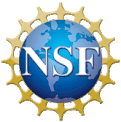CONFERENCE
Perfectly matched perspectives on statistical mechanics, combinatorics and geometry
Perspectives couplées sur la mécanique statistique, la combinatoire et la géométrie
16 – 20 June, 2025
Scientific Committee
Comité scientifique
David Cimasoni (Université de Genève)
Sylvie Corteel (CNRS, Université de Paris)
Benjamin Young (University of Oregon)
Organizing Committee
Comité d’organisation
Cédric Boutillier (Sorbonne Université)
Béatrice De Tiliere (Université Paris-Dauphine)
Sunil Chhita (Durham University)
Zhongyang Li (University of Connecticut)
Terrence George (UCLA)
The dimer model is one of the fundamental systems in two-dimensional statistical mechanics. Used for example as model for ferromagnetism or crystal melting, and having a formulation in terms of random tilings, it is exactly solvable in a strong sense. Its correlations can be expressed in terms of determinantal point processes: it is thus a model of lattice free fermions. Many instances have a conformally invariant scaling limit, described by the Gaussian free field.
In the recent years, additional structures have been discovered, unveiling deep connections with combinatorics, algebraic geometry, integrable systems, and discrete differential geometry. The richness of these structures and the interplay of various branches of mathematics make the dimer model special and particularly attractive. It is the object of study of a growing number of researchers from various fields: physicists, mathematicians and computer scientists.
The goal of the conference is to bring together specialists of various aspects
of the dimer model, from statistical mechanics and combinatorics to algebra and geometry, but also younger participants who want to learn more about the field, showcasing the latest results and providing a unique forum for future collaborations and scientific discoveries.
Presentations will focus on the newest results on dimers and related models and the exposition of innovative techniques likely to yield significant breakthrough in the future.
Le modèle de dimères est un des modèles systèmes fondamentaux en mécanique statistique bidimensionnelle. Formulable en termes de pavages aléatoires, et utilisé par exemple pour modéliser le ferromagnétisme ou la fonte de cristaux, il est exactement soluble en un sens fort. Ses fonctions de corrélation peuvent être exprimées en termes de processus déterminantaux : c’est un modèle de fermions libres sur réseau. De nombreuses instances de ce modèle ont une limite d’échelle invariante conforme, décrite par le champ libre gaussien.
Ces dernières années, de nouvelles structures ont été découvertes, révélant de profondes connexions avec la combinatoire, la géométrie algébrique, les systèmes intégrables et la géométrie différentielle discrète. La richesse de ces structures et l’interaction entre différentes branches des mathématiques rendent le modèle de dimères spécial et particulièrement attirant. C’est l’objet d’étude d’un nombre croissant de chercheurs de différents domaines : physiciens, mathématiciens, informaticiens.
Le but de la conférence est de réunir les spécialistes des différents aspects du modèle de dimères, depuis la mécanique statistique et la combinatoire jusqu’à l’algèbre et la géométrie, mais aussi de jeunes participants voulant apprendre plus sur ce sujet, présenter les derniers résultats et fournir un forum unique pour de futures collaborations et découvertes scientifiques.
Les présentations se concentreront sur les résultats les plus récents ainsi que l’exposition de techniques innovantes susceptibles de mener à des percées significatives dans le futur.
SPEAKERS
Nathanael Berestycki (University of Vienna) Massive holomorphicity in near-critical dimers and the Sine Gordon model
Sylvie Corteel (CNRS, Sorbonne Université) Domino tilings of generalized Aztec triangles
Jan de Gier (University of Melbourne) Pfaffian point process and TASEP on the half line
Philippe di Francesco (CEA, France) Tangent method and the shear phenomenon
Dan Douglas (Virginia Tech) A quantum multidimer model for ribbon graphs
James Farre (MPI Bonn) Horocycles, Lipschitz maps, and laminations
Pavel Galashin (UCLA) Amplituhedra and origami
Alexander Goncharov (Yale University) Q-diagrams of surfaces and noncommutative cluster Lagrangians
Vadim Gorin (University of California, Berkeley) The Airy-beta line ensemble
Christopher Hoffman (University of Washington) Permutations with no long increasing subsequences
Wai Yeung Lam (University of Luxembourg) Period matrices and quasi-trees on discrete Riemann surfaces
Nick Ovenhouse (Yale University) Mixed Dimer Model for Euler and Catalan Numbers
Greta Panova (University of Southern California) Algebra meets probability: permutons from pipe dreams via Aztec diamonds and TASEP
Jim Propp (University of Massachusetts Lowell) Bringing Tiling Theory to New Heights and Vice Versa
Sanjay Ramassamy (CEA Scalay) The infinite bin model, old and new
Nicolai Reshetikhin (University of California, Berkeley)
Jean-Marc Schlenker (University of Luxembourg) Circle patterns on surfaces with complex projective structures
Scott Sheffield (MIT) Dimers and Yang-Mills theory
Stanislav Smirnov (Université de Genève) Coulomb gas and lattice models
David Speyer (University of Michigan) Dimer models for the octahedron recurrence – old and new
Wendelin Werner (University of Cambridge) Switching identities for loop-soups and consequences
Lauren Williams (Harvard University) Plabic tangles and cluster promotion maps
Catherine Wolfram (Yale University) The multinomial dimer model




